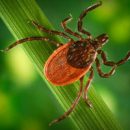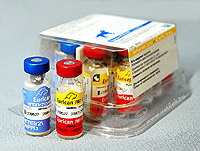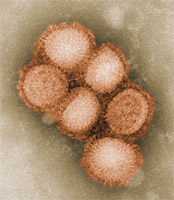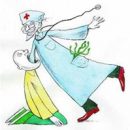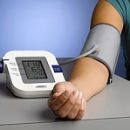Intestinal infections make up a large group of diseases in which symptoms of infectious diseases in children may be caused by bacterial agents or manifest itself as a viral infectious disease in children may be associated with the use of infected food or water. Article about it.
Content
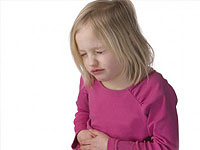 Infectious diseases are caused by pathogenic microbes and are transmitted from an infected person to a healthy organism in various ways. The ability to cause the pathological process in microorganisms is unequal, it all depends on its activity and the velocity of isolation of poisonous substances and toxins. The pathogens of intestinal infections in children and adults are distributed mainly through water and food products.
Infectious diseases are caused by pathogenic microbes and are transmitted from an infected person to a healthy organism in various ways. The ability to cause the pathological process in microorganisms is unequal, it all depends on its activity and the velocity of isolation of poisonous substances and toxins. The pathogens of intestinal infections in children and adults are distributed mainly through water and food products.
Salmonellosis is a typical representative of acute infectious intestinal diseases. The main source of infection is the foodstuffs, canned meat, mince, boiled sausages, are examined by pathogenic microorganism, while the main way of transmission of infection — Alimentary. Salmonella have very high resistance in the environment, are able to easily and smoothly multiply in food products without changing their appearance and odor. Incubation period of the disease is small and lasts from 1 to 3 hours. During Salmonellosis, it is customary to allocate 3 clinical forms.
- Localized form — The most common option proceeds in the form of gastritis or gastroenteritis, in which the symptoms of the infectious disease in children are an increase in body temperature, pain in the epigastric region, nausea and vomiting. After a few hours a typical sign of the disease appears — diarrhea. The chair is liquid and watery, in some cases with an admixture of mucus and blood, with an unpleasant grinding smell. The child is concerned with false calls for defecation and grapple pains along the intestinal loops. In the case of multiple vomiting and frequent diarrhea, signs of violation of water-salt metabolism are joined, dehydration, convulsive syndrome and collapse develops.
- The generalized form is characterized by a severe course of the disease against the background of apathy, sharpness of the child with a decrease in blood pressure, a noticeable gentle of the pulse and herpetic rashes.
- Subclinical shape or bacteridation is expressed in the absence of any clinical manifestations of disease when salmonella detected in the child's physiological feces — Urine and Calais.
Viruses and kids infection paths
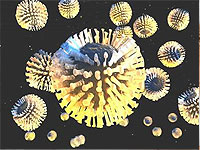 The main causative agents of viral infectious diseases in children are widespread microorganisms from the group of enteroviruses and rotaviruses, adenoviruses and astroviruses. Infection occurs with a fecal-oral way with food, contact and water transmission mechanism. The main distinctive signs of viral lesion of the intestinal mucosa is considered the appearance of a heavy watery chair, usually without impurities of mucus and blood. A small patient is concerned about strong and frequent vomiting, the body temperature, as a rule, fluctuates within subfebrile numbers, the phenomena of intoxication are expressed moderately, and the water balance changes do not reach significant deviations. The child feels satisfactorily, plays, active and takes food.
The main causative agents of viral infectious diseases in children are widespread microorganisms from the group of enteroviruses and rotaviruses, adenoviruses and astroviruses. Infection occurs with a fecal-oral way with food, contact and water transmission mechanism. The main distinctive signs of viral lesion of the intestinal mucosa is considered the appearance of a heavy watery chair, usually without impurities of mucus and blood. A small patient is concerned about strong and frequent vomiting, the body temperature, as a rule, fluctuates within subfebrile numbers, the phenomena of intoxication are expressed moderately, and the water balance changes do not reach significant deviations. The child feels satisfactorily, plays, active and takes food.
Compliance with sanitary and hygienic standards — Pledge of health
A bright presentation of infectious diseases in children also represents food toxicoinfection, which is associated with the use of knowingly infected products with such pathogens, as intestinal wand, streptococci, staphylococci, clostridium, protea, etc. Disruption of sanitary and hygienic standards, the conditions of cooking and storing food products provokes the reproduction of pathogenic agents in meat dishes, milk and vegetables. The main role in the pathogenesis of the disease is given to the action of toxins, which, causing significant damage to the intestinal mucous membrane, violate its ability to succeed and lead to the development of severe hemodynamic disorders, which is a presentation of infectious disease in children. The disease begins a few hours after eating unsuitable products with multiple vomiting, pain at the bottom of the abdomen and frequent nausea. Quite quickly to these symptoms joins diarrhea liquid and watery, sometimes with an admixture of mucus. Usually, with food toxicoinfection, the body temperature rarely rises to high numbers, but the baby worries the increasing weakness, the pallor of the skin, a decrease in pressure, cooling limbs.


